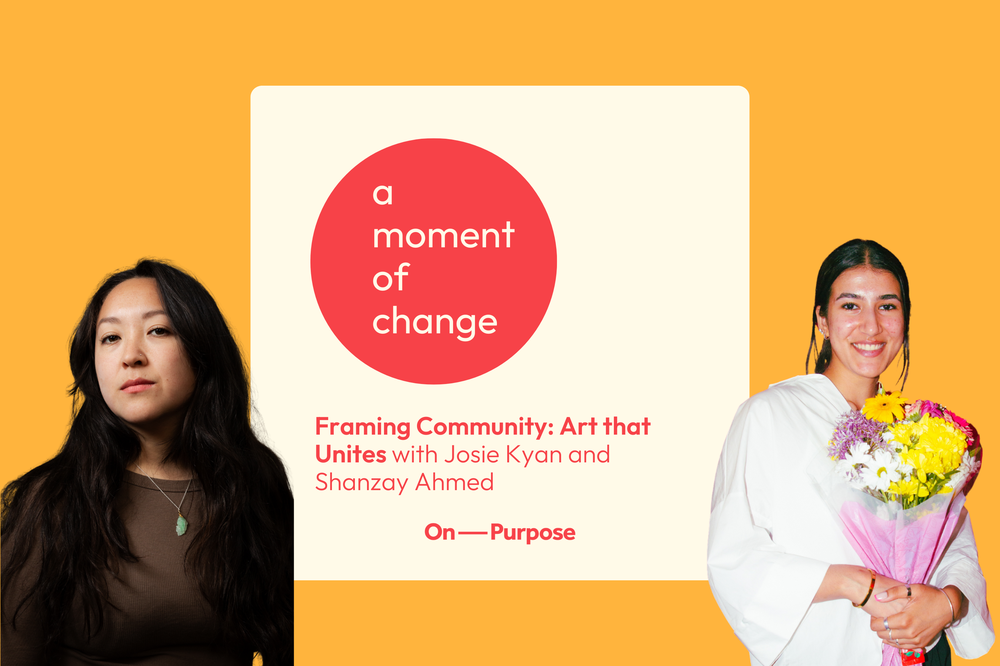Why community art matters more than we think

For the third episode of the Creativity for Action series of A Moment of Change, “Advocacy: food, photography and community art,” I sat down with Josie Kyan and Shanzay Ahmed to learn more about the creative process behind the Hey Salam Hola Bwakeye exhibition, which launched earlier this year in June.
This exhibition was designed to challenge the negative narratives that refugee communities often face, instead offering a joyful counter-image full of respect, laughter, and humanity. It showcased portraits of five refugees (or co-creators), each paired with an audio track where the audience could listen to their stories, moments of their journey to and in the UK, woven with personal memories and reflections. If the exhibition ever shows again (you can keep an eye on what Breadwinners is up to here), I recommend you RUN for the tickets.
Coming from a non-creative background, I’ll admit I had definitely underestimated how much thought, time, and intention goes into creating something like this. Every angle, pose, and colour choice is there for a reason, designed to evoke a feeling in the audience. Listening to Josie and Shanzay talk about the “why” behind every part of the process made me appreciate the final result even more.
It was especially powerful hearing from both perspectives: Josie as the director, and Shanzay as one of the co-creators featured in the portraits. Josie explained how every location, wardrobe choice, and set design was chosen to reflect each co-creator’s personality and help them feel confident enough to show their true selves. Shanzay agreed, saying she’d never felt more confident than during that shoot, and honestly, you could feel that energy in every photo.
When I sat in front of the portraits, listening to their stories, I found myself relating in unexpected ways. Whether it was laughing with friends, picking up a new hobby, or holding onto a precious memory, there were moments that mirrored my own experiences. That’s the real magic of art and storytelling, the way it breaks down barriers and reminds us that even when we don’t look, act, or speak alike, we share so much more than we realise.
One of my biggest takeaways from the conversation was this question:
Do we, as a society, value community art in the same way we value “high art”? Probably not, but maybe we should. Community art might not hang in the Louvre, but it carries something just as important, belonging. It gives voice to stories that rarely make it into galleries and creates spaces where people feel seen, not just observed. High-quality art doesn’t have to come from prestige, it can come from connection, collaboration, and courage.
So how do we push ourselves beyond our comfort zones and learn about different cultures and experiences? Start small. Listen to music from a genre you’ve never explored (I recently discovered Orchestra Baobab and can’t stop listening to them). Watch films or series from other countries (like The Swimmers, which follows two sisters fleeing war in Syria, or Pachinko, which offers an intimate look at the lives of Korean immigrants in Japan during the 20th century). Or head out to local exhibitions and cultural festivals — you’d be surprised by how much creativity is happening right in your neighbourhood. Take a cooking class, volunteer with a community arts project, or simply strike up a conversation with someone whose story is different from yours. Every small act of curiosity brings us closer together.
There’s so much we can do to make “them” one of “us”… so let’s do it.
Listen and subscribe to A Moment of Change on Spotify, iTunes, Acast, Google Podcasts or wherever you get your podcasts!
